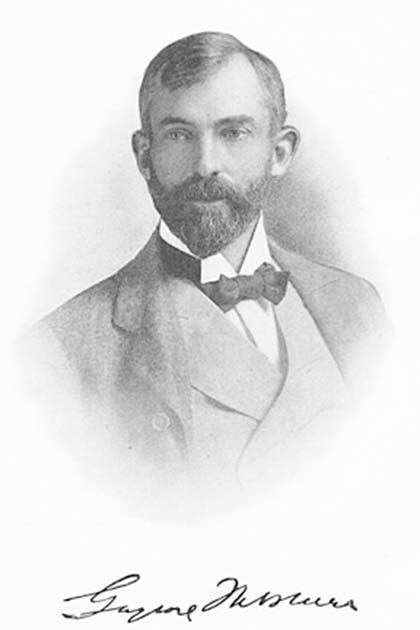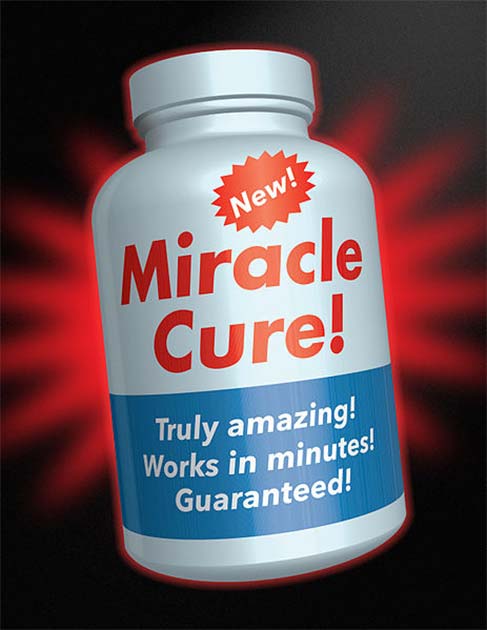Quackery is as old as the stars. It would seem that for every fool with money, there was someone ready to take that money and exchange it for something of little value. And this is especially true for health: from the snake oil salesmen of the Wild West to today’s essential oils and homeopathy, there is always a product for the unwary buyer.
In the early 1920s, a curious invention known as the Ionaco, created by former political activist Gaylord Wilshire, stirred intrigue and skepticism alike. Marketed as an electric belt with miraculous curative powers, the Ionaco entered a world where unconventional medical devices held a dubious place.
How did a social activist transform into a fraud? To find an answer we’ll delve into the enigmatic story of Gaylord Wilshire’s post-political venture, examining the Ionaco’s fascinating but questionable journey in an era when pseudoscience and quackery ran rampant.
Who was Gaylord Wilshire?
Born in 1861, Gaylord Wilshire was primarily known as a real estate developer and political activist. He initially made his name as a developer, primarily in Los Angeles, where he played a significant role in the city’s growth during the late 19th and early 20th centuries.
After finding success as a developer Wilshire turned his attention to more altruistic interests. In particular, he became famous for his political activism.

One might expect a developer to have conservative views, but Wilshire was a prominent advocate for socialist and radical causes. His commitment to socialist ideals was evident in his publication, “Wilshire’s Magazine,” which became a platform for his passionate political views.
Wilshire’s political career was marked by his support for progressive reforms, labor rights, and the redistribution of wealth. He ran for various political offices but never attained widespread political success. Despite this, his efforts and outspoken advocacy left a lasting impact on the political landscape of the time.
Quite why Wilshire abandoned real estate and politics to pursue a career as an inventor is unclear. Some historians believe he simply grew bored of real estate and turned to inventing to make up for his various political failures.
Others think he became obsessed with the medical field due to his own health issues. As he got older Wilshire began suffering from increasingly severe headaches. It seems that these ultimately pushed him into retiring from real estate at the age of 64.
Ionaco, the Life Belt
Wilshire started working on his “Life Belt” in 1910 and development took him 15 years. He began by exploring clothing infused with radium, and electric heating pads and even sold a special kind of health bread for a while, “Ex-cell-o.”
The designs for all his products were tied to his “radiation cure theory,” which he first recorded publicly in 1924. His obsession with electromagnetic health had been sparked by Otto Heinrich Warburg, a German physiologist, doctor, and Nobel laureate known for his study on iron in the blood.
Wilshire’s belt contained a thick coil of insulated wire that generated a small magnetic current and another smaller wire that had a flashlight bulb attached to it. This bulb would light up when next to the thicker coil.
The rest of the belt was covered in thick leather. It wasn’t exactly fashionable. The belt came in at roughly 15 to 18 inches (38 to 46 cm) in diameter and was pretty hefty, weighing 6.5 pounds (2.9 kg).
Wilshire claimed the magnetic field generated by the coil boosted the body’s absorption of oxygen. He believed this increased oxygen flow could cure numerous toxic diseases and improve health in general. Marketing materials said the Ionaco could cure everything from cancer to diabetes and even insomnia.
After years of working on his belt, Wilshire first tried it on himself in 1925. Supposedly it instantly cured the headaches that had plagued him for decades. He then started letting friends and family try it out, who universally reported positive results.
Buoyed by these results Wilshire soon established the Iona Company offices in LA. The belts began to sell like hotcakes and agencies for his company were soon located all over the Pacific coast and major metropolitan areas of the US. Between 1925 and 1927 Wilshire sold around 50,000 devices with sales peaking in 1926.
Accusations of Quackery
Much of this success came down to Wilshire’s knack for marketing. He advertised his wonder cure through testimonials which he had published in newspapers and aired on the radio. These claims were often attributed to famous or well-known and respected physicians. It later turned out that most of the quotes the adverts ran with were false.
Even more units were sold via demonstrations and door-to-door sales tactics. Known as “demonstrators” Ionaco salesmen provided both paid and free “sample” treatments to potential buyers. They were known to target those deemed most likely to fall for their lofty claims.
- The Perpetual Motion Machine: Did Charles Redheffer Defy Physics?
- Electrotherapy: Did the Romans use Electricity in their Medicine?
And the belts weren’t cheap. Each belt cost around $3.50 (equivalent to $58 in 2022) to make but sold for $65 (equivalent to $1,074 in 2022), not a bad markup. For those desperate enough, the belt could also be bought on credit for $5 (equivalent to $83 in 2022) a month.
It didn’t take long for actual medical professionals to start taking notice, and not in a good way. Organizations such as the Public Health League of Washington, the Better Business Bureau of Seattle, and the Rockefeller Institute of Medical Research all began to investigate Wilshire’s new business. Rather than letting it get him down Wilshire responded by challenging the California medical profession to try out his device in a full-page advertisement he ran in the Los Angeles Times.
The American Medical Association, or AMA, hit back with a damning article that highlighted all of the bogus claims made by Wilshire and the Iona Company. This had a direct impact on sales, which soon began to drop in the summer of 1927.

That same year the Iona Company dissolved, although sales of the device continued for many more years. For years health experts carried on dismissing the Ionaco as quackery, nothing more than a fraud.
Not that that stopped copycat products from coming to market. In 1928 a former manager of the Iona Company, Philip Ilsey, released his own “version”, the Theronid. Over the years other clones cropped up including the Ionizer and the Restoro.
But what happened to Wilshire? Did his miracle invention let him live forever? Not quite. Wilshire died in 1927 in New York Hospital from kidney disease. It turns out his “life belt” was of little use.
Wilshire’s legacy is a sad, confusing, and controversial one. Once known for his socialist views, he ended up being remembered as a charlatan whose bogus invention preyed on society’s weak and vulnerable. How did he reconcile what his company was doing, and the money it was making, with his own socialist beliefs?
There are two choices. Wilshire was either a conman and a hypocrite who knew his device was snake oil and was happy making money off of the sick. Or he genuinely believed in his product and let the marketing run away from him. Either way, a lot of people wasted their money on a useless light-up belt.
Top Image: Gaylord Wilshire’s advert for Ionaco. Source: Gaylord Wilshire’s Iona Company; The Technological Fix: How People Use Technology to Create and Solve Problems ISBN 9780415947114 / Public Domain.